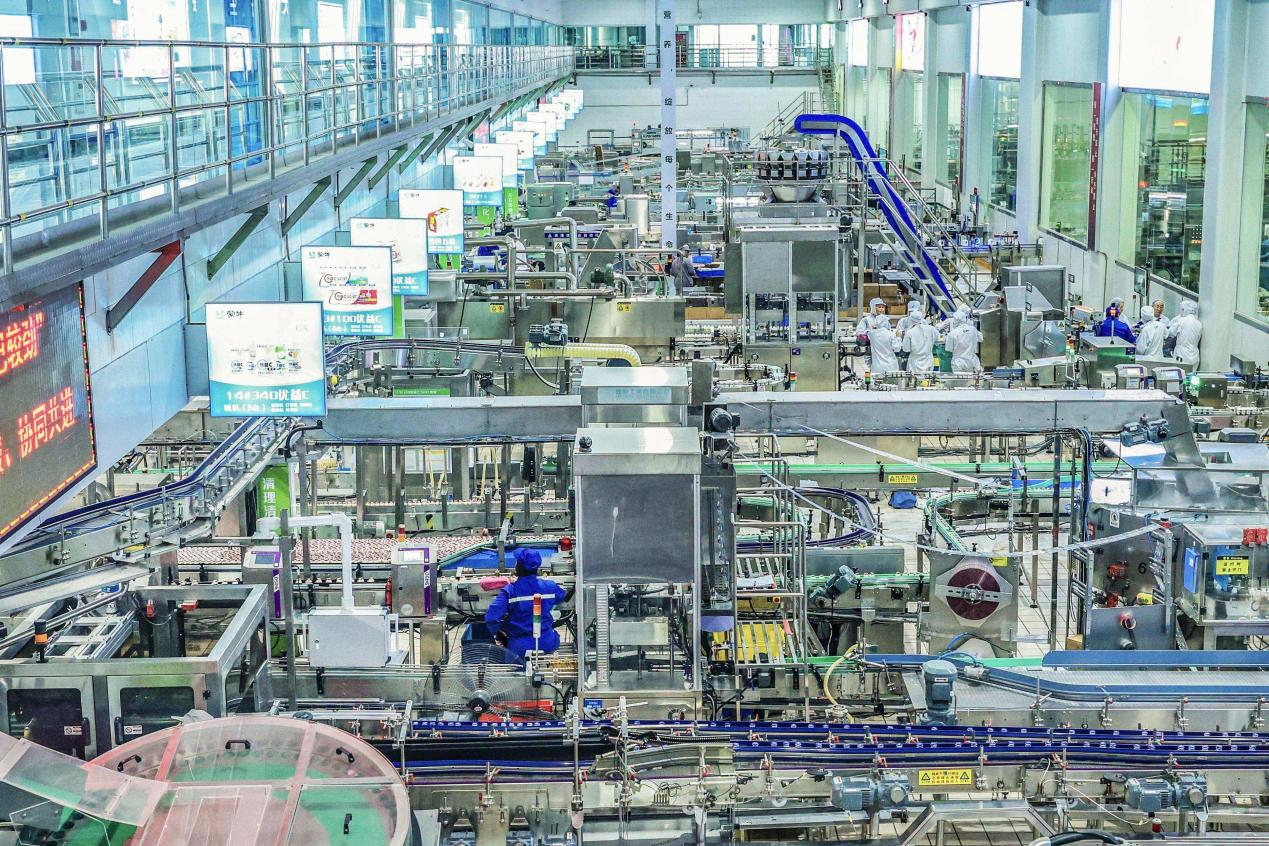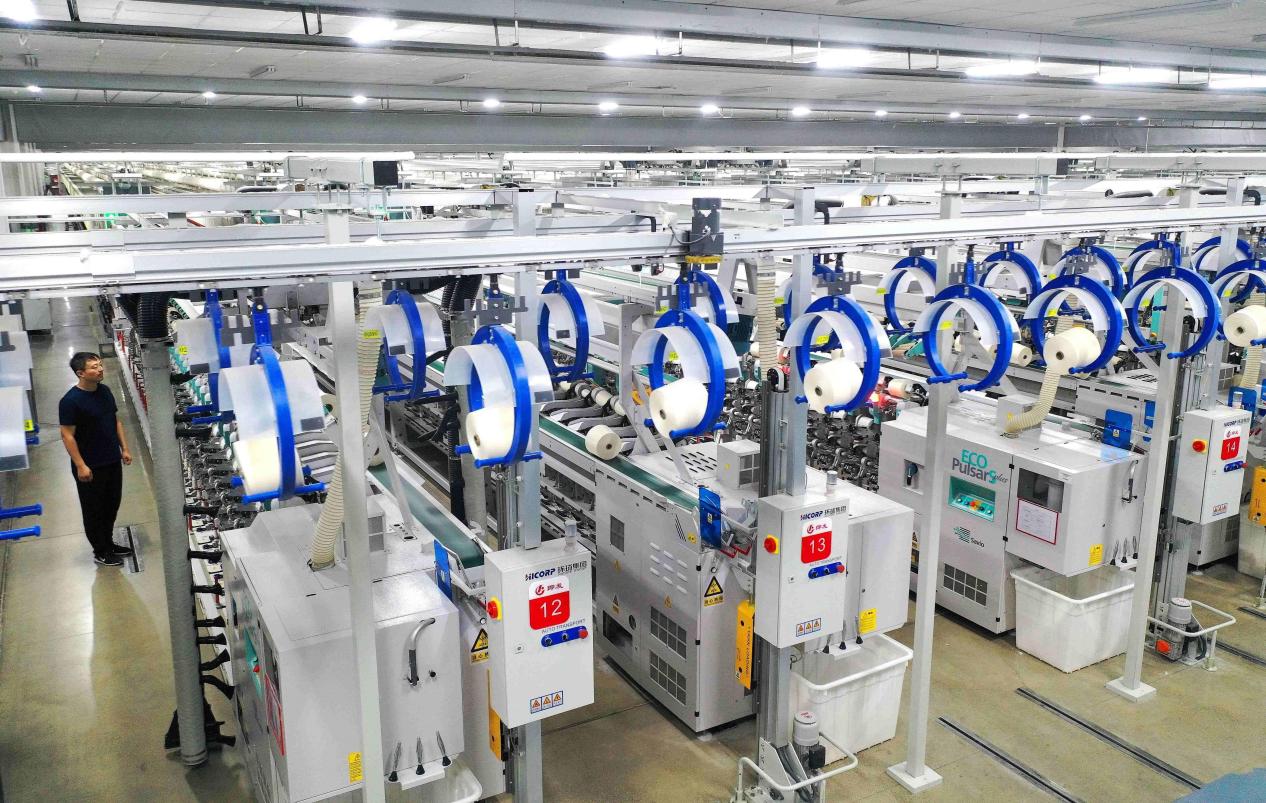




- BRNN
- BRI News
- BRNN News
- Database
Official Documents Polices and Regulations
Inter-government Documents International Cooperation BRI Countries
Business Guide Economic Data BRI Data
Trade
Investment Projects Latest projects
Cases - Content Pool

In a production workshop of a bicycle industrial park in Wuhe county, Bengbu, east China's Anhui province, a worker is busy fulfilling an order bound for overseas markets. (Photo/Li Xiangqian)
Recently, China unveiled its performance in light industry achieved during the 14th Five-Year Plan period (2021-2025), and three sets of figures stand out.
The number of light industry enterprises reached 136,600 in 2024, growing at an average annual rate of 5.89 percent since 2020. Retail sales of key products totaled 7.93 trillion yuan ($1.12 trillion), accounting for 16.2 percent of China's total consumer goods retail. Global exports hit $925.4 billion, with 7.17% average annual growth.
"China has consolidated its position as the world's largest light industrial producer and exporter through sustained scale expansion and enhanced supply chain resilience," said Zhang Chonghe, head of the China National Light Industry Council.
Intelligent upgrading and green transformation driving growth
At Haier's refrigerator factory in Qingdao, east China's Shandong province, robotic arms assemble units with precision - producing one refrigerator every 10 seconds. The plant's 5G-powered industrial internet system coordinates hundreds of components in real-time.
"From raw material intake to AI-driven production scheduling, our entire operation utilizes on-demand mixed-model manufacturing," said Yin Dongdong, director of manufacturing technology at the plant. "AI visual positioning has reduced labeling errors to near-zero while doubling traditional factory capacity. We now ship approximately 5,000 premium refrigerators daily to global markets."
This facility exemplifies the sector's broader digital transition. Throughout the 14th Five-Year Plan period, China's light industry has continued to upgrade under the dual drive of intelligent manufacturing and green transformation.
The industrial internet is now widely adopted, covering more than 60 percent of enterprises above designated size. Green development has also made significant progress. As of 2024, 1,321 light industry enterprises, including those in home appliances, papermaking, food processing, and battery manufacturing, had been recognized as national-level green factories.

Dairy products are manufactured in a smart workshop of a plant of Mengniu Dairy (Ma'anshan) Co., Ltd. in Ma'anshan, east China's Anhui province. (Photo/Wang Wensheng)
Innovation investment fuels technological breakthroughs
Is yeast only for baking? Not anymore. In an exhibition hall of Angel, a global yeast and biotech company in Yichang, central China's Hubei province, a display wall catches visitors' attention: high-sugar yeast for bread, specialized yeast for brewing, yeast extracts for hot pot bases, and even yeast protein powder. With hundreds of products and thousands of specifications, Angel has become a global leader in its field.
Driven by sustained investment in research and development (R&D), the company has entered a fast track of growth. According to Zhao Xiaojun, deputy general manager of Angel, over the past five years, the company's R&D spending has grown at a compound annual rate of 16 percent, and the company has secured more than 400 authorized invention patents. Innovation is enabling yeast to take on increasingly diverse roles in everyday life, Zhao added.
And the story doesn't end with the food industry. "During the 14th Five-Year Plan period, technological innovation has become the central driving force of China's light industry," noted Zhang.
"Enterprises have accelerated the establishment of collaborative innovation systems integrating industry, academia, and research, helping the sector move up the global value chain," Zhang added.
The results are impressive. As of 2024, China's light industry had obtained over 1.79 million authorized invention patents, with the number of valid patents rising from 127,000 in 2020 to 214,000 in 2024, an average annual increase of 12.3 percent.

High-end fiber products are manufactured in a smart workshop of a textile tech firm in Qingdao, east China's Shandong province. (Photo/Liang Xiaopeng)
Supply-side innovation, channel upgrading, and open cooperation
In Huadu District of Guangzhou, south China's Guangdong province, nearly 30 automated production lines at Guangzhou Leonis Machinery Co., Ltd,. efficiently assemble bicycles branded Trinx for export to 70 countries and regions.
"Since we began expanding overseas in 2016, we've established localized production bases in several countries, including India," said Li Liwei, deputy general manager of Trinx's operations. "For Southeast Asian markets, we've developed cost-effective mountain bikes, while for high-end European consumers, we've designed intelligent electric-assist models. Our precise product strategy has helped maintain an annual overseas growth rate of more than 20 percent."
During the 14th Five-Year Plan period, China's light industry has consolidated its market advantage through supply-side innovation, channel upgrades, and greater openness and cooperation. In 2024, light industry accounted for 25.9 percent of China's total exports, ranking first among all sectors for the fifth consecutive year.
Looking ahead to the 15th Five-Year Plan period (2026-2030), both opportunities and challenges lie ahead. "China's light industry will continue to strengthen its capacity for innovation, brand influence, and sustainable development," Zhang said.
"By 2030, we aim to cultivate more than 10 globally renowned brands and over 50 regionally distinctive ones, while maintaining our leading global market share for light industrial products," he added.

Tel:86-10-65363107, 86-10-65368220, 86-10-65363106